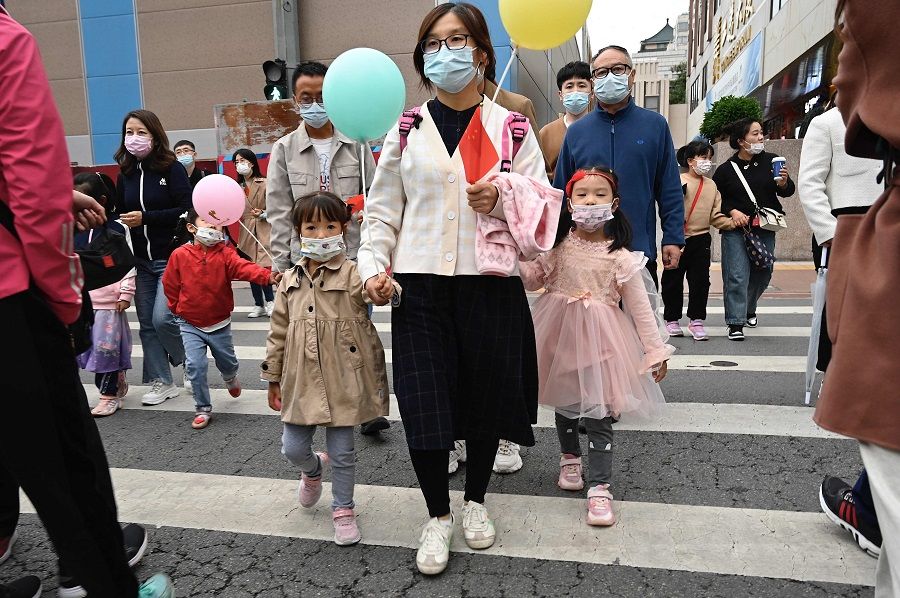'Leftover men' in the Chinese countryside and 'leftover women' in Chinese cities

Recently, the Civil Affairs Bureau of Hunan province's Xiangyin county responded to a Chinese People's Political Consultative Conference (CPPCC) member's recommendation note, about addressing the difficulties faced by older rural youths in finding a spouse.
The bureau acknowledged that the issue was a common and pressing one, and that the marriage woes of older rural men were no longer just personal problems but social problems. These issues would have an impact on rural social stability and economic development, which would in turn, affect the construction of a new socialist countryside and a harmonious society. Their proposed solution was for young rural women to stay in their hometowns so as to alleviate the gender imbalance.
Dearth of women in the countryside
It is no longer anything new that a large number of older, single rural men - commonly known as shengnan (剩男, lit. "leftover men") - find it difficult to get married, as observed in the ever-increasing bride price in rural areas.
Associate Professor Liu Yanwu of Wuhan University's Department of Sociology found that between the 1970s and 1980s, marriage was hardly a burden for most rural households. But since the mid-1990s, marriage expenditure for the male side began increasing, going up to three to four times the annual income of a rural labourer at that time.
Since 2000, the bride price in rural areas has skyrocketed, and some rural areas have added a few other non-negotiables on top of the bride price, such as a house and so on. This adds up to 16 years of a rural labourer's pay.
...there are 34.9 million more males than females.
Soaring bride prices reflect a serious imbalance in the rural areas. According to statistics from China's seventh national population census released on 11 May, there are 723.34 million males and 688.44 million females in China. The sex ratio (female = 100; male to female) is 105.07, which means that there are 34.9 million more males than females.
In China's rural areas, the gender imbalance is more serious. The third agricultural census of Hunan province showed that at the end of 2016, there were 27.5513 million males in Hunan's rural population. This was 2.9134 million more than the number of females, putting the overall sex ratio at 111.82. Not only that, the sex ratio in all age groups was over 100.
What's happening in Hunan is but a microcosm of the situation across the country. Based on China's third national agricultural census, the proportion of male agricultural production and operation personnel in 2016 was 52.5%, while the proportion of females was 47.5%.
Specifically, there were 314.22 million agricultural production and operation personnel in 2016, of which 164.94 million were men, and 149.27 million were women, meaning that there were 15.67 million more males than females. The young and middle-aged made up the bulk of these agricultural production and operation personnel.
Looking for eligible bachelors in the cities
There are many reasons for the gender imbalance in rural areas, such as an underdeveloped economy and the corresponding traditional mindset of favouring sons over daughters, coupled with the implementation of family planning policies.
...there are more women than men in China's 15 megacities including Beijing, Shanghai, Guangzhou and Shenzhen.
But the opposite is true in China's big cities, with the emergence of a massive number of older, single women, commonly known as shengnü (剩女, lit. "leftover women"). Analysing the statistical yearbooks of major cities across the country, we can see an interesting trend: among the registered population, there are more women than men in China's 15 megacities including Beijing, Shanghai, Guangzhou and Shenzhen.

This phenomenon was first observed in Shanghai in 2009. Later on, it was observed in Beijing in 2017, Guangzhou in 2018 and in Shenzhen in 2019. And this is just its registered population - if we take into consideration the massive volume of non-registered females working in these cities, the proportion of women in major cities may be even higher.
One might therefore ask, why is there such a serious gender imbalance in the country's regional populations? Why are there more leftover men in rural areas but more leftover women in big cities?
Actually, putting aside specific historical development stages and unique national fertility policies, this is the case with almost every other country in the world. Thus, we cannot solely look at China's unique national conditions if we want to explain why there are more leftover men in rural areas but more leftover women in big cities. We have to look at the deeper reasons behind this problem.
'Opportunity facts' and 'gender facts'
To answer this question, there is a need to make clear two facts that constitute the premise of our discussion.
One, cities offer more development opportunities than rural areas. Hence, people with higher skills or productive capacities would always prioritise working in the cities. This is what we call an "opportunity fact".
Two, due to natural gender differences in parenting, females - as opposed to males - would prefer marrying someone with a higher productive capacity. This is what we call a "gender fact".
With these two facts in mind, we can now split men and women into two categories: one, men and women who are above average in terms of productivity - we will call them Male A and Female A; two, men and women who are below average in terms of productivity - we will call them Male B and Female B.
...although it is difficult for Female B to carve out a path for herself in the city based on her skill sets or productive capacity, because Male A is in the city, Female B would naturally want to find and marry Male A...

Given the opportunity fact, we can be certain that Male A and Female A will choose to work in the cities because there are more opportunities there and it is more likely that their skills would be put to good use.
Given the gender fact, Female B would also prefer to go to the city for a simple reason: although it is difficult for Female B to carve out a path for herself in the city based on her skill sets or productive capacity, because Male A is in the city, Female B would naturally want to find and marry Male A there as this aids starting a family and raising children. Thus, Female B tends to head to the cities as well.
Rural men more accurately 'left behind'
As a result, Male B gets left behind. It is not that he does not want to live or work in the city, but two challenges stand in his way: one, based on his personal capabilities, it would be difficult for him to outcompete Male A. On the other hand, while Male B may have better physical strength than Female A, jobs that rely on manual labour generally do not pay well. Hence, it is likely that Male B will not outcompete Female A for the high-paying jobs either.
Two, as everyone thinks that there are more opportunities in the city and would want to try their luck there, cities naturally become crowded, which in turn pushes up housing, transportation and relationship costs. In particular, it would be increasingly difficult for an elderly Male B to survive in a city.
Because of these two challenges, it is highly likely that Male B would return to his hometown after he has reached a certain age. After all, given China's large population and the current degree of urbanisation, it is impractical for the entire population to live in urban areas.
Undoubtedly, Male B could have saved up enough from his years in the city to pay the bride price back in his rural hometown; it is possible that a portion of Female Bs will make their return to rural areas as well. But no matter, the female population in rural areas will still be smaller than the male population, which results in a gender imbalance.
On the other hand, a different scenario will play out in urban areas, where the male population is smaller than the female population, resulting in a different type of gender imbalance.

Thus the reason why there are more leftover men in rural areas but more leftover women in big cities can be deduced from basic economic logic. This answer is also corroborated by the empirical evidence provided by Western economists.
Women and their search for better labour and marriage markets
Columbia University Associate Professor Lena Edlund published a paper titled "Sex and the City" in The Scandinavian Journal of Economics in 2005. The paper discussed the reasons for young women outnumbering young men in urban areas of the Western world.
According to Edlund, urban areas offered skilled workers better labour markets, which meant that both male and female skilled workers were attracted to work there. But if this was so, assuming there were more skilled males than skilled females, it would not explain why young women outnumbered young men in urban areas.
The key to this puzzle lies in the asymmetry in marriage markets for men and women. As husbands are tasked with the greater responsibility of supporting the family after marriage, urban areas provide a better marriage market for females, aside from just a better labour market, in that they are more likely to find a richer man in the city who could be a good provider in the marriage.
Swedish municipality data for the two age groups of 25-34 and 35-44 support Edlund's argument. She found that in urban areas, females belonging to these two age groups outnumbered males, and males belonging to these age groups also earned a higher income than females. Moreover, the younger the age group, the more females there were than males.
"Why must women sacrifice their rights?", "Why aren't younger men encouraged to work on improving themselves?"...- Chinese netizens

Now, returning to the Xiangyin county case study, the Civil Affairs Bureau's response received harsh criticism from netizens, who gave retorts such as "Why must women sacrifice their rights?", "Why aren't younger men encouraged to work on improving themselves?", "If the economy is developed and cultural activities in the countryside are revitalised, younger females will naturally stay", and so on.
On 8 October, staff from the bureau clarified that their response did not mean to discriminate against women or objectify them; they merely wanted to encourage - not coerce - young rural women to stay in their hometowns.
Actually, it is impossible for such proddings to triumph over the strong need for survival, and neither should compulsory measures be adopted as that would only result in greater tragedies.
This article was first published in Chinese by Caixin Global as "为啥农村"剩男"多 大城市"剩女"多". Caixin Global is one of the most respected sources for macroeconomic, financial and business news and information about China.
Related: No bride price, no marriage in China | Is China facing a demographic crisis? | Gender equality: The solution to China's declining birth rate | Chinese single women ponder love, marriage and freedom | More young and single Chinese women buying properties in China's top-tier cities | Why Chinese women are unwilling to give birth

